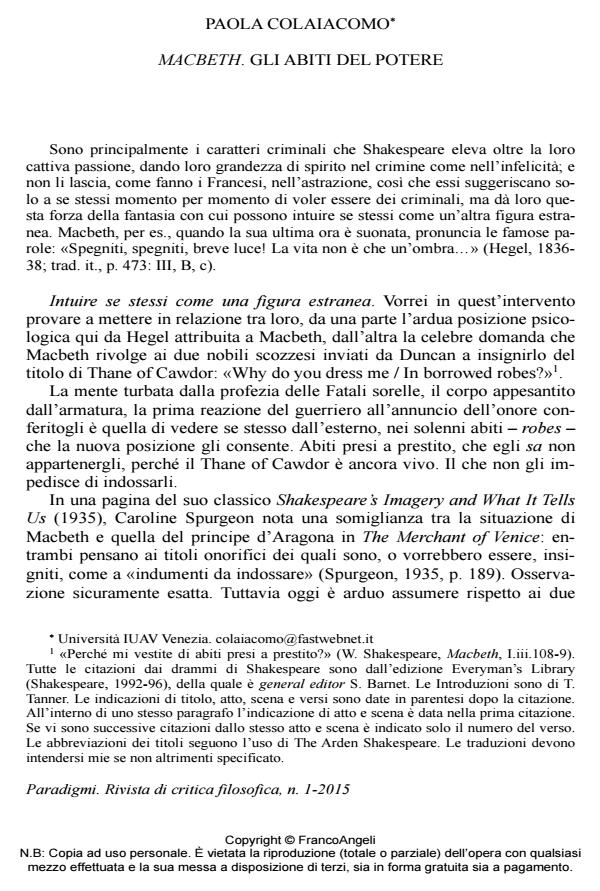Habits of Power in Macbeth
Journal title PARADIGMI
Author/s Paola Colaiacomo
Publishing Year 2015 Issue 2015/1
Language Italian Pages 15 P. 127-141 File size 68 KB
DOI 10.3280/PARA2015-001009
DOI is like a bar code for intellectual property: to have more infomation
click here
Below, you can see the article first page
If you want to buy this article in PDF format, you can do it, following the instructions to buy download credits

FrancoAngeli is member of Publishers International Linking Association, Inc (PILA), a not-for-profit association which run the CrossRef service enabling links to and from online scholarly content.
The collapsing of the Medieval correspondence between dress and function - a visible sign of the dissevering of "the King’s two bodies" (see E. Kantorowicz, The King’s Two Bodies, 1957) - is a major Shakespearean theme, epitomized in Mac beth’s question: «Why do you dress me / In borrow’d robes?» (I.iii.108-9). A question which seems to situate the hero in the old world of correspondences and analogues. The paper tentatively explores, in relation to Macbeth, the significance of Shakespeare’s reprise of that old paradigm, at the very moment of its disintegration.
Keywords: Body, Correspondence, Dress, Function, Nudity, Power.
Paola Colaiacomo, Macbeth. Gli abiti del potere in "PARADIGMI" 1/2015, pp 127-141, DOI: 10.3280/PARA2015-001009